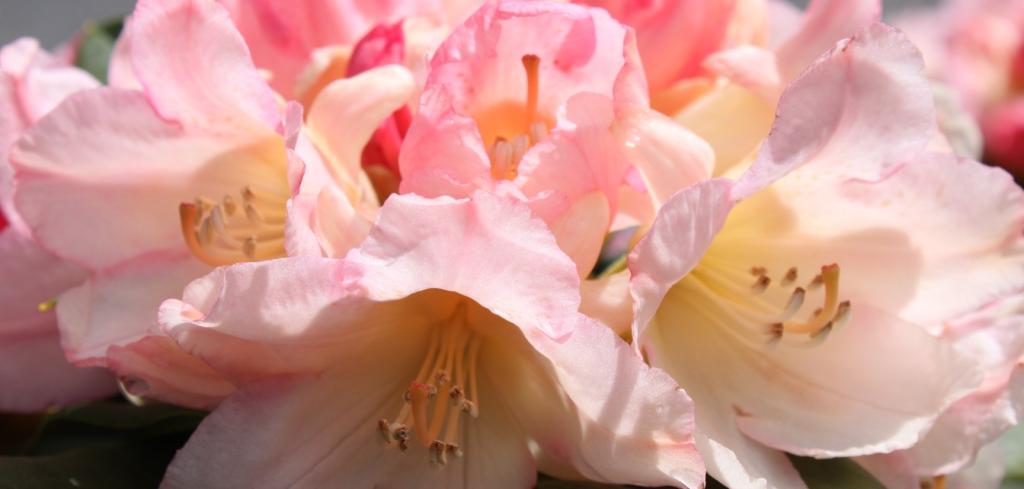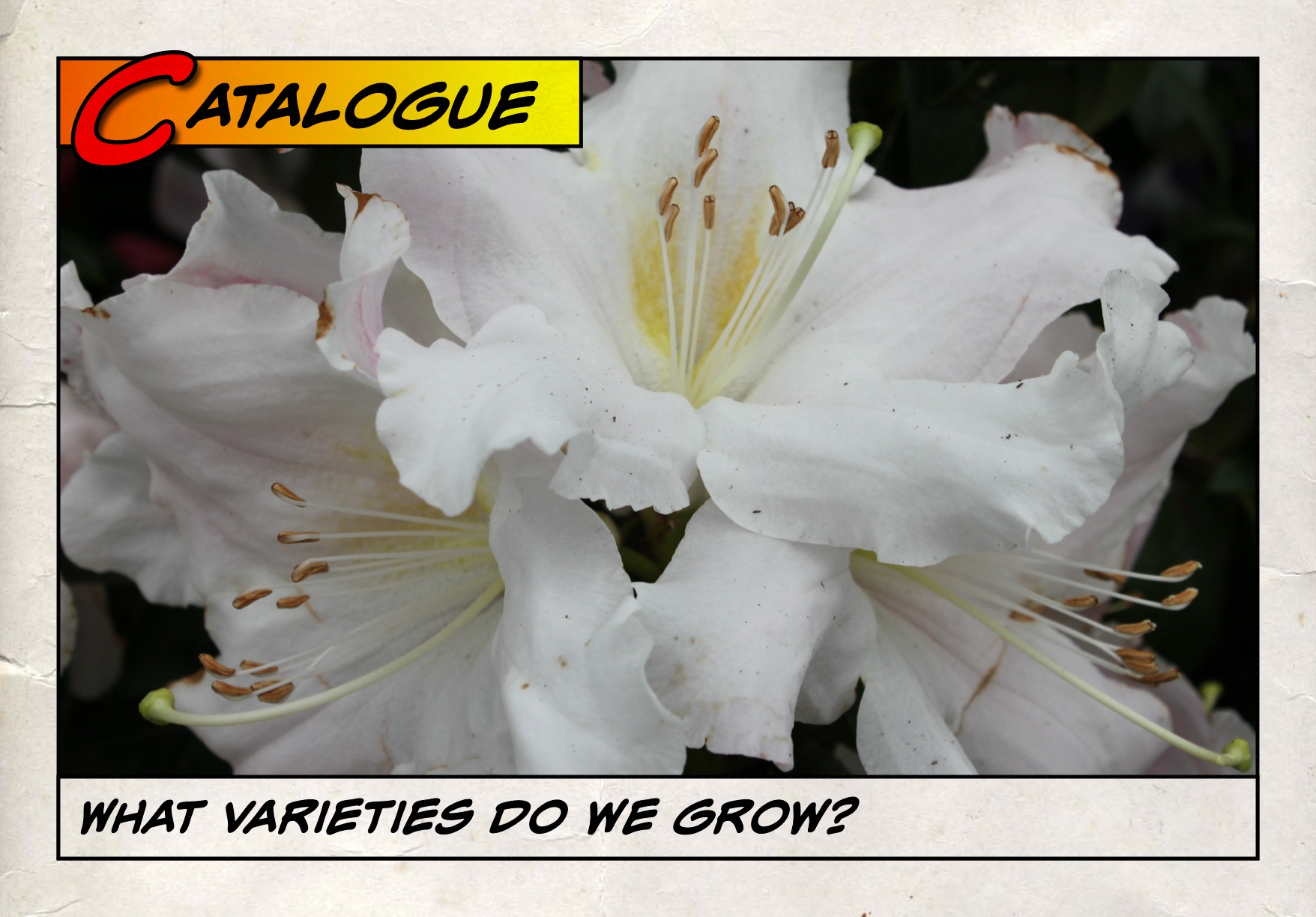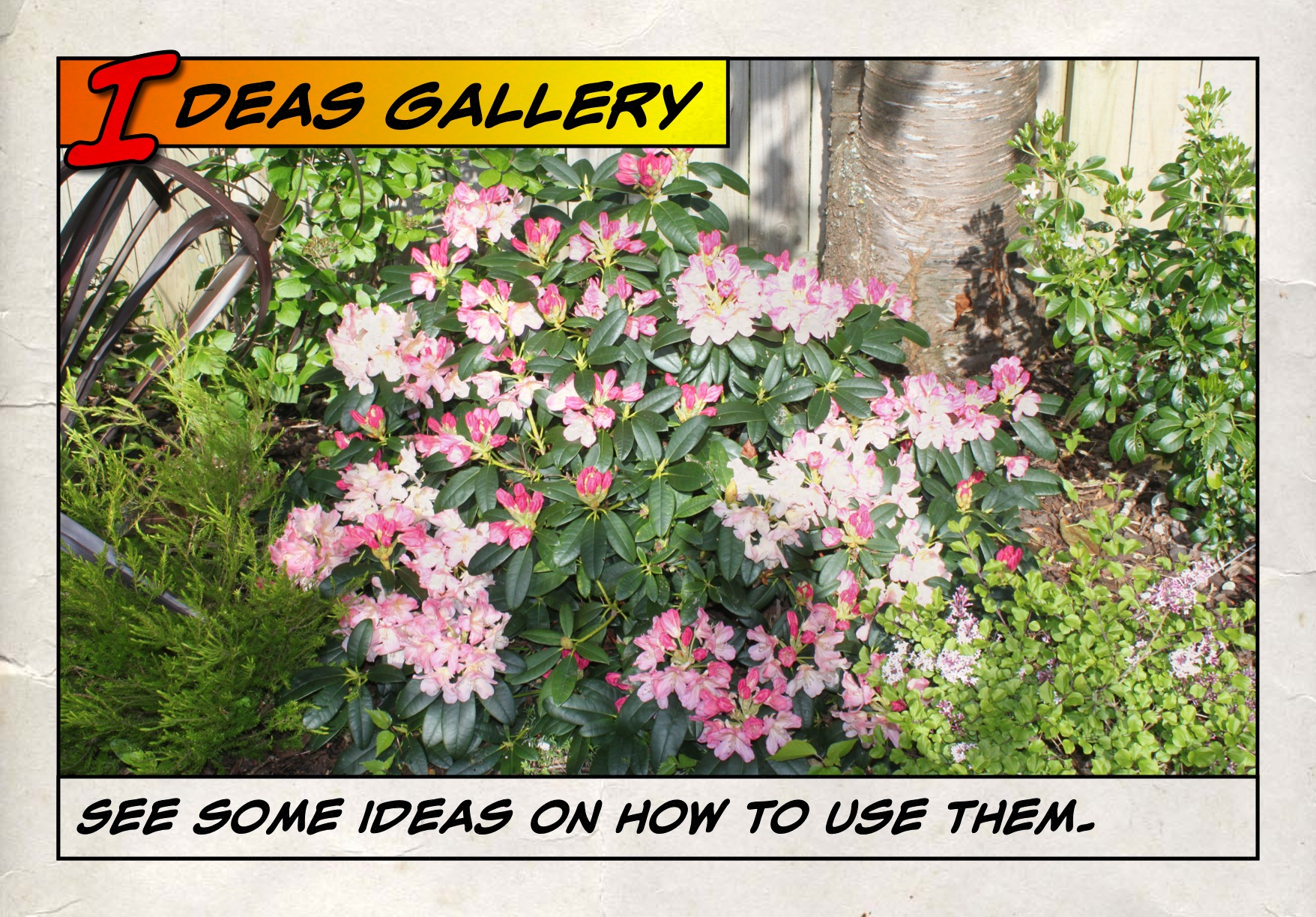
Rhododendron are appealing and colourful shrubs that are available in a wide range of sizes, leaf textures and forms and in shades of pink, red, white, yellow and blue. Breeding has created many compact forms for smaller gardens.
They combine well with Azalea, Camellia and Pieris and will look good with trees such as Cornus (Dogwood), Acer (Maples) and the range of Magnolia. They work well in most styles of gardens especially oriental and woodland. They are a perfect choice for mixed borders, especially under other trees.
Planting hints:
Rhododendrons enjoy a cool spot in dappled shade but will tolerate full sun if well watered during dry spells. As a rule of thumb, the smaller the leaf, the more sun tolerant they are.
An acidic (no lime), well draining but moisture retentive soil is preferred. Adding compost, potting mix or coir fibre will help. Rhododendrons have fibrous root structures which are masses of tiny hair like roots that stay close to the surface. They do not like having wet feet and benefit from having a mound created for them to sit up above the soil level to improve drainage.
When planting, dig a hole that is roughly twice the size of the root ball and loosen the removed soil. Mix compost to the existing soil and back fill gently. Stamping down the soil can break the delicate root ball.
After planting put down a layer of mulch to conserve moisture and help keep the weeds down. Brown edges on the leaf can be stress caused by dehydration from wind, sun or dry soil.
Pests and diseases:
Usually hardy and easy care, they can be affected by Aphids and Mites which are easily sprayed for. The biggest pest is Thrips which causes silver leaves with brown spots underneath. Spray early spring and summer to break the cycle, ensuring you get underneath the leaves.
Wet or alkaline soils can cause a lack of vigour and yellowish leaves. Improve drainage or lift up plants in wet soils. Most Wellington soils are the right pH for Rhododendron but you can dig through peat or add aluminium sulphate to bring it down.
Care:
Avoid weeding or cultivating around your Rhododendron as this can break the fine roots. A good mulch or gentle hand weed will take care of any weeds.
When they finish flowering you should prune or trim the spent flowering heads. This stops them trying to grow seed and will put all that energy into new growth and next season’s flowers.
After flowering is also the right time for pruning. Many varieties keep a naturally tidy habit but pinching off the new shoots at the end of the stems will encourage more buds further down to burst away.
Rhododendrons are neat, bright shrubs that deserve a spot in your garden. Like many groups of plants these are definitely one that you start to collect. Check out the range we grow and see which will be your favourite.

.JPG)
